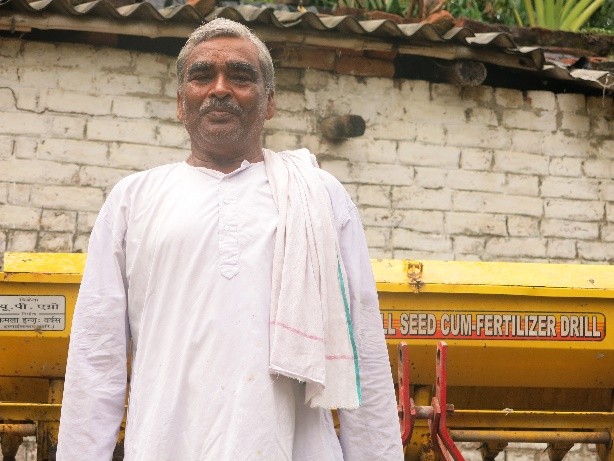Speeches Shim

March 2016—For Indian farmers like Nathuni Singh, climate change has become a stark reality. Summers are searing ahead of schedule in north India, where wheat growers in Bihar and eastern Uttar Pradesh can lose 25 percent of their crop harvest.
India is the world’s third largest emitter of greenhouse gases and, according to a U.N. report, a 1 degree Celsius rise in temperature alone could lead to a decrease of 6 million tons of wheat production.
This is an alarming statistic as 58 percent of India’s population depends directly on agriculture as a primary source of income. In response, in 2009, USAID and the Bill & Melinda Gates Foundation jointly established the Cereal Systems Initiative for South Asia (CSISA) to help farmers adapt to climate change and rainfall variability.
CSISA is improving crop production systems by integrating cutting-edge technologies with resource conservation and management. By developing innovative approaches to farming, the project has helped farmers save water and money. Best practices from these approaches are now being applied in Bangladesh and Nepal.
In his 45 years of farming, Singh has seen nature change course many times. “Nature has always been unpredictable. I have lost many of my crops to untimely rains and drought. But things have worsened in recent times. With every year, the sun seems to be getting hotter and harsher,” he says.
“Even in the eastern Indo-Gangetic plains, one of the most fertile regions in the world, we saw farmers lose 25 percent of their crop harvest due to summers arriving ahead of schedule. Where summers previously didn’t begin until May, temperatures now reach 40 degrees Celsius [104 degrees Fahrenheit] by the end of March,” says R. K. Malik, a CSISA senior agronomist.
In 2009, CSISA began reaching out to wheat farmers in eastern Uttar Pradesh and Bihar, advising them to plant their wheat crop a month sooner than usual and without first tilling the land in the traditional way.
“By sowing before November 15 instead of the end of December, as is the practice in the region, the grain is able to fully develop before the heat wave arrives, which can cause the grain to shrink and lead to crop failure,” says Malik.
However, this unique wheat sowing method found very few takers. “Initially, when we started in 2009, only four farmers agreed to plant their wheat early. One of them was Nathuni Singh,” adds Malik.
Singh first heard about this new planting method when CSISA representatives came to his village of Devpokhar in eastern Uttar Pradesh to demonstrate how this frugal technique can benefit poor farmers like him. Being the sole bread winner for his family of nine and having grown only 390 kilograms of wheat in the previous year—far below average—Singh was desperate for help.
“The CSISA team gave me seeds and fertilizers, and guided me on when and how to sow the seeds without irrigating the land. They even assured me that if the crop failed, they would repay me for the losses I bear,” says Singh.
Since adapting to the new practice, Singh has not only doubled his wheat production but has also saved expenses such as the cost of irrigation and ploughing. “That year, from my 3-hectare farmland, I produced 881 kilograms of wheat, more than twice of what I had grown the previous year,” says Singh. “It was the first time in my life that I had harvested so much. I was happy beyond words.”
What began with just four farmers in 2009 has gained a significant following. Today, over 620,000 farmers across the provinces of eastern Uttar Pradesh and Bihar grow their wheat using CSISA’s early sowing method.
For a full-length version of this story, visit FrontLines.
LINKS
Follow @usaid_india, on Facebook, on Flickr, on YouTube

Comment
Make a general inquiry or suggest an improvement.